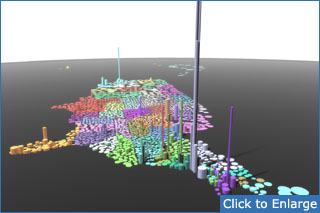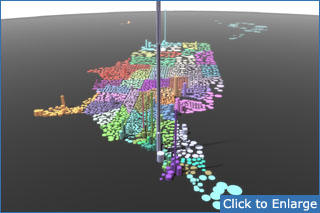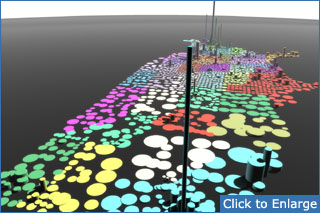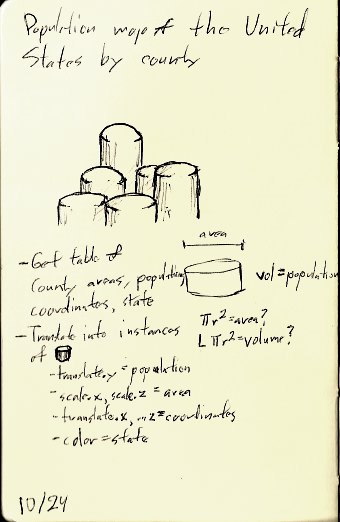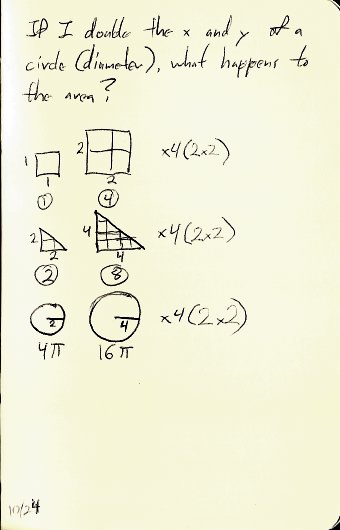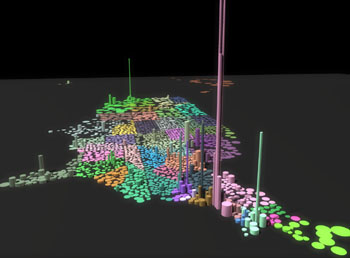A device I find useful when facing screenwriter’s block is to focus on what each character needs in a scene.
There is a school of screenwriting that would have us believe that all scenes are defined by what the characters want, but I disagree. I’ve spent many enjoyable moments with friends not particularly needing or wanting anything, and that’s what screenwriting basically is — voyeurism. Overemphasis on need-driven scenemaking destroys spontaneity and overloads the script with tension.
Compare the following problem scene from the first and second draft of “Windy City.”
First draft:
EXT. ESTER'S FLAT - NIGHT
DAN
Why didn't you stop?
NINEVE
Well it's not that I didn't like
dance, it was just the girls there.
But, being a senator's daughter,
you've got to have a certain amount
of...
She pauses at the doorknob, folds her arm formally behind her.
NINEVE
(cont.)
Poise. Charm. And most
importantly --
They enter.
INT. ESTER'S FLAT, CONT.
PAUL
...There's just NO WAY!
Nineve and Dan are startled. The adults stands around the kitchen table. Sherrib and Tigres look bitter, Ester and Gyllian defiant. Paul is angry. We've never seen Paul angry.
SAUL
(from the corner)
I can stay, whatever good THAT'LL
do...
TIGRES
Saul...
PAUL
(to Dan and Nineve)
They cut off our funding this
afternoon, the senate. We can't
afford to stay.
DAN
They can... just... do that?
SHERRIB
(to Nineve)
They cut room and board stipends.
Most of us don't use them, but the
valley delegates need them.
NINEVE
...Because they live at the hotel?
SHERRIB
Right.
PAUL
They called a special session this
afternoon. While we were out
watching the airship with everyone
else.
GYLLIAN
Little sneaks.
SAUL
All this money, you'd think I could
buy some brains...
TIGRES
(quietly)
Stop it.
PAUL
Mrs. Hadden has agreed to let us
stay here. Saul's staying on
at the hotel. Hana, Hale and
Tudaya have already made plans to
go back.
ESTER
You'll have to sweep up the dust
and flower petals, but it'll be
nice to have someone living in
the spare rooms again.
DAN
We don't have to go home?
PAUL
(surprised)
No, not yet. Not us anyway.
Second draft:
INT. SENATE - HIGH HALLWAY, CONT.
DAN
Then why didn't you stop?
NINEVE
Well it's not that I didn't like
dance, it was just the girls there.
But, being a senator's daughter,
you've got to have a certain amount
of . . .
Nineve stops at the end of the hallway, folding her arm formally behind her.
NINEVE
(cont.)
Poise. Charm. And most
importantly --
INT. SENATE - LIGHT TOWER, CONT.
PAUL
(angrily)
Well I DIDN'T!
Nineve and Dan start. Paul looks ANGRY -- we've never seen Paul angry. Sherrib, Saul and Tigres are with him, along with the other three valley delegates -- HANA, HALE and TUDIYA -- surrounded by telegraphs and windows.
TUDIYA
You're taking this far too
personally, Assurbani. No one was
expecting us to succeed.
SAUL
I'm sorry, Paul. I ran down there
as soon as I heard about it, but
there wasn't much I could do.
PAUL
You could've done something! Talk,
waste time. . . ANYTHING!
SAUL
When pop's money doesn't solve the
problem, I'm pretty useless. You
know that.
TIGRES
Stop it.
PAUL
Why didn't you at least -- ?
TIGRES
Stop it both of you! Ester?
ESTER
Paul and Dan can stay as long as
they need to with me. I have more
than enough room. We need to put
this in the proper frame of mind.
It's a setback, surely, but only
that.
ASSURBANI
Ester's right. Ester's always
right. We're still operative.
We've got to look for a way ahead.
HALE
You're wasting your time! Honestly,
I appreciate all that you've done
for us, Senator Sherrib. . .
PAUL
We still have funds for the hotel
through Friday. You can at least
help out until then.
HANA
Paul, let it go. It's done.
TUDIYA
No one was expecting us to succeed.
PAUL
Well I was! Dan, Nineve, come in.
They are still standing in the doorway.
PAUL
(cont.)
They voted to cut off our funding,
the Senate. The money they give us
for the hotel. Saul can afford to
stay. Dan, you and I are invited to
stay with Ester. Hana and Hale want
to go back tomorrow. Tudiya, you
can stay for a couple weeks, can't
you?
TUDIYA
I'm afraid I'll be going back as
well.
PAUL
(to Dan)
So our party is somewhat diminished.
DAN
But we don't have to go back?
PAUL
No. Not yet.
SHERRIB
They very quietly called a special
session this afternoon to vote on it.
NINEVE
How did they get enough people?
SHERRIB
Don't know. Everyone who's a
reliable vote for Chairman Khorsa
was there. I think they've been
planning this for a while.
PAUL
We were out watching the airship
with everyone else.
Is the scene better? Who knows, but I’m happier with it. It satisfies my need.
(In case you’re interested, I’m of the Jim Cameron school of screenwriting: “Just describe the movie.”)

